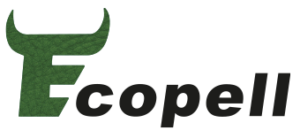Animal welfare and leather
If cattle could freely choose where they want to spend the day, the majority of them would probably decide to stand together with other members of their species on a lush pasture with a few shady trees and a clear stream or pond as a source of water.
Contrary to the pictures showing milk and meat packaging to consumers, around a third of the approx. 11 million cattle kept on agriculture in Germany have this choice. The others either live in so-called play pens or in tie-up pens.
Tethering is particularly common in small dairy farms in southern Germany. The animals are tied to a fixed place and cannot run around freely in the barn. In 2010 around 650,000 animals had to live in this type of husbandry (around 15% of the cows, in Bavaria even 30% of the cows). Tethering (year-round) is very controversial from an animal welfare point of view. In 2020 the Danish government therefore passed a general ban on this type of husbandry for dairy cows beginning in 2027. In Germany, a transition period until 2028 was decided. Since 2002, tied stalls in the EU are no longer eligible for funding from EU funds. Overall, their number is steadily decreasing.
Housing form and leather quality
The type of husbandry used in cattle husbandry, both for dairy cows and cattle for meat production, has an impact on the entire animal. Diet, exercise, care and the design of the animal environment affect animal health, the quality and composition of the milk, the meat quality and – last but not least – the condition of the animal skin.
Depending on which criteria are used for the assessment, the skin quality of animals from different forms of husbandry is to be assessed as more or less good.
The possibility of grazing with balanced, species-appropriate fresh feed and exercise leads to a better internal skin structure than a low-movement posture with little fresh feed.
As far as the texture of the skin’s surface is concerned, the picture is somewhat more complicated.
Each type of husbandry has advantages and disadvantages. Or to put it another way: with each type of husbandry, different characteristics show up with different frequency.
The scuff marks from the tie-down devices can often still be seen, for example, on the leather surface in the neck and neck area.
The traces of skin pests (lice, mites, hair lice) are also often seen in animals that are tethered, because the animals are restricted in their personal hygiene.
However, such skin parasites also occur in cows and cattle in loose stalls if the stalls are too dark or poorly ventilated.
Cattle with freedom of movement, be it in the playpen or outside, injure each other in rank fights. Especially in forms of organic animal husbandry that do not remove the horns of the cattle, the pale acid can result from horn blows. Their traces are visible in the leather.
There are other risks of injury lurking in the pasture, sometimes leaving small and other times larger marks on the skin: thorn bushes, barbed wire, rough fence posts or tree bark. Horseflies and other stinging insects also plague cattle when grazing. If the itchy areas are scratched, small scars remain in the skin.
Finally, the treatment by the farmer also plays a role. Automatic cow brushes are a wellness program for cows. On the one hand, they are used for grooming, but can also transmit skin pests if other herd animals are infected by them and this is not recognized early enough.
Too vigorous grooming of the fur, actually also a well-intentioned care measure, can lead to injuries.
The mistreatment of cows with pitchforks and batons is less well-intentioned. Both are not allowed under animal welfare law, but unfortunately occur again and again. If an animal is injured while being loaded for transport to the slaughterhouse, the skin can no longer heal. A hole later appears in the leather. If the skin can still heal, a scar remains that is visible in the leather. Just like surgical scars after veterinary interventions.
Cattle hides are as diverse as cattle lives
These superficial, visible features on the cowhide do not affect the leather quality in terms of its robustness and longevity. More important for a good inner leather quality is good animal health and animal welfare as well as good treatment.
The criteria of organic animal husbandry offer the best framework conditions for this.
All cattle hides that are processed into ecopell leather come from farms in Germany. In this country only about 6% of the cattle are kept organic. The supply of organic cattle hides on the skin market is correspondingly small. This proportion can only be increased if the consumption of organically produced meat increases compared to that from conventional animal husbandry.
Around half of the ecopell leather comes from hides from small farms and from smaller slaughterhouses. A small amount of hides leads to more work when collecting and preserving the hides until they are delivered to the tannery.
Large batches of hides from large slaughterhouses can be processed more quickly because the minimum quantity for a tanning barrel filling (200 – 250 hides) can be reached more easily. The disadvantages, e.g. in terms of working conditions in large slaughterhouses, have been criticized time and time again.
In order to produce good leather from happy cows and cattle, a fundamental change in agriculture towards a more ecological economy is necessary. Everyone can contribute to this.
And the legal standards for agriculture must finally be consistently raised in this direction.




